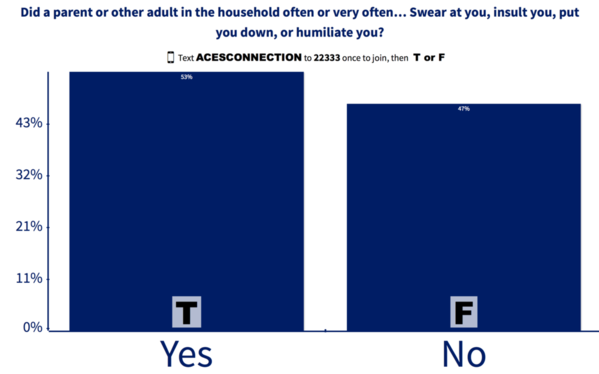
When Dr. Robert Anda began giving presentations about the CDC-Kaiser Permanente Adverse Childhood Experiences (ACE) Study after its first publication in 1998, he often asked people in the audience to anonymously fill out a 10-question ACE survey. Someone gathered all the paper polls, tallied the results, and Anda announced the average ACE score for the room. Generally speaking, he found that people in the helping professions had higher ACE scores than the 17,000 members of Kaiser San Diego who participated in the original ACE Study.
And so it was last week, when I did a presentation for the Prevent Child Abuse-Sonoma County Blue Ribbon Training in Windsor, CA. This time, the people in the room could see the results instantly. That's because I used a nifty online survey tool called PollEverywhere.com. Participants texted T or F to a number, and watched bar graphs move up and down on a large screen as their texts zipped away automagically to a cell phone tower, into the Internet, and onto a web page displayed on that large screen. The results were anonymous.
The outcome was surprising to many of us. In nine out of the 10 questions, the responses were higher than the ACE Study. The answers to some questions, such as the one about psychological abuse at the top of this post, were significantly higher (53% compared with the ACE Study's 11%). Those attending the training included health, social services, criminal justice and human resource professionals, public officials, educators, community leaders, family members, caregivers and other interested individuals -- in other words, people in the serving professions, and, because of the event, people who obviously care about preventing childhood adversity.
Here are the ACE Study questionnaire results, and below that, the results of the approximately 120 people who participated in the poll.
I have two guesses as to why their scores were higher than the ACE Study scores. One, they're all working to prevent childhood adversity and to change systems so that they no longer traumatize already traumatized people, which may mean that their own experiences propelled them into this kind of work. Second, they're a generation or two removed from the original ACE Study participants, whose average age was 57 in 1995. ACEs comprise the nation's worst chronic epidemic; epidemics tend to become worse if there's no intervention. And we're now just barely beginning to intervene in this one.
Do you have any other ideas?
[btw, the poll is closed and the results cleared, so texting T or F now will result in the message being scattered into cyberspace.]
Substance abuse: 51% yes, 49% no.
Parental sep/divorce: 46% yes, 54% no.
Mental illness: 47% yes, 53% no.
Battered mother: 16% yes, 84% no.
Criminal behavior: 9% yes, 91% no.
Physical abuse: 23% yes, 77% no.
Sexual abuse: 28% yes, 72% no.
Emotional neglect: 25% yes, 75% no.
Physical neglect: 12% yes, 88% no.

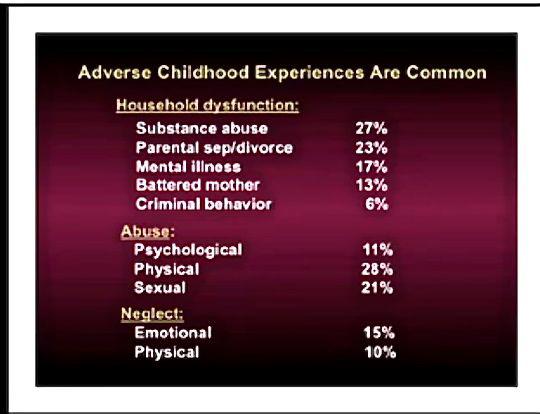
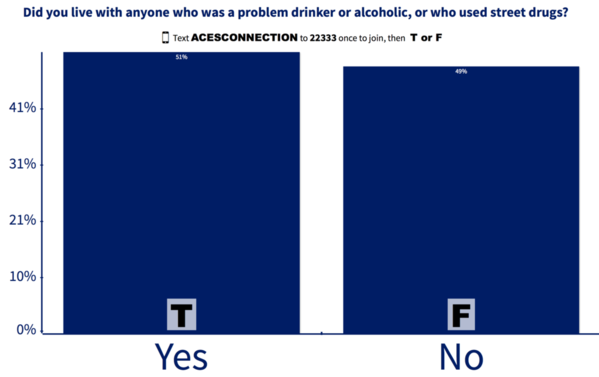
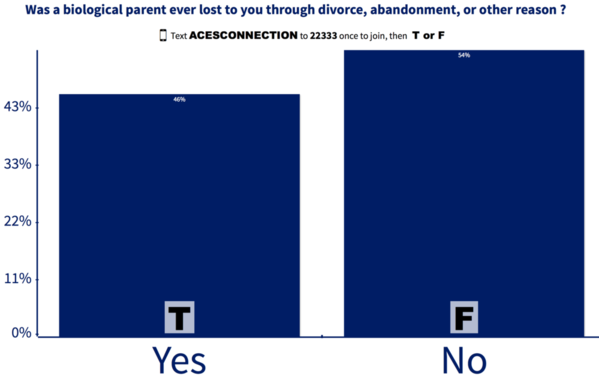
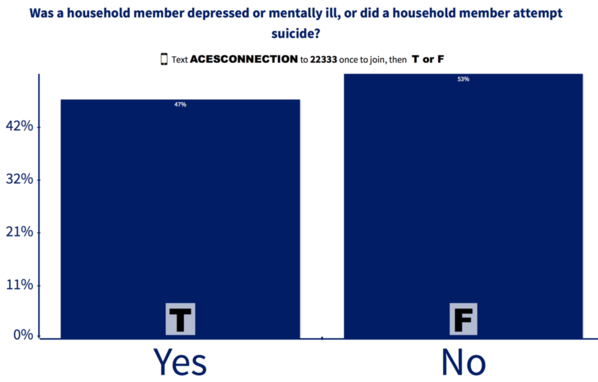
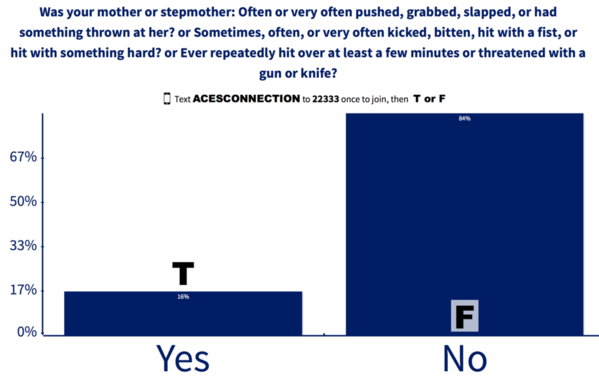
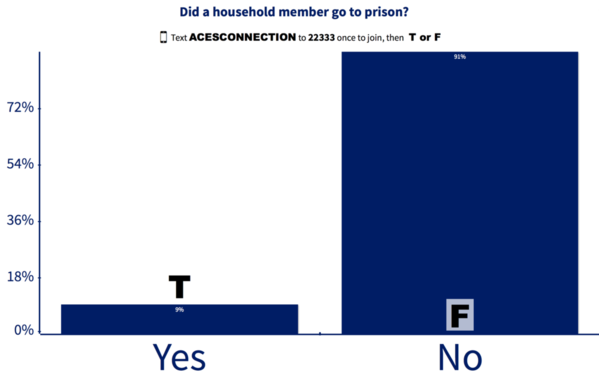
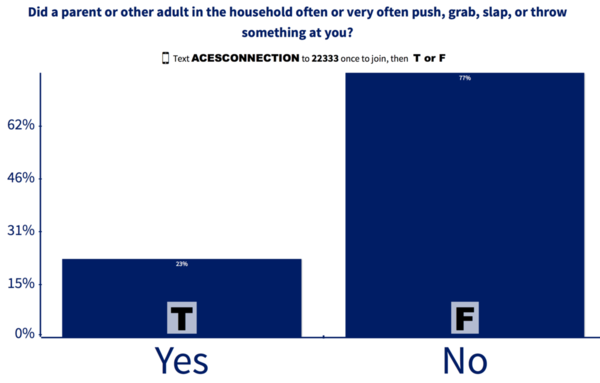
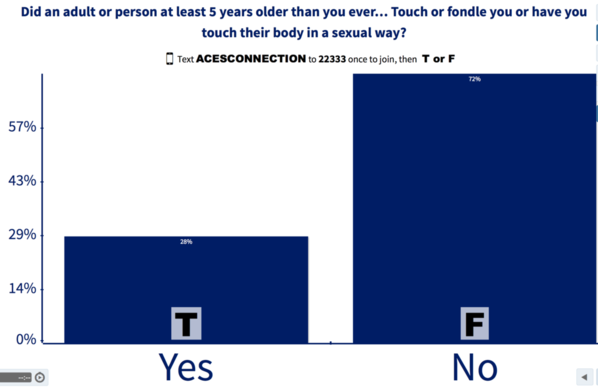
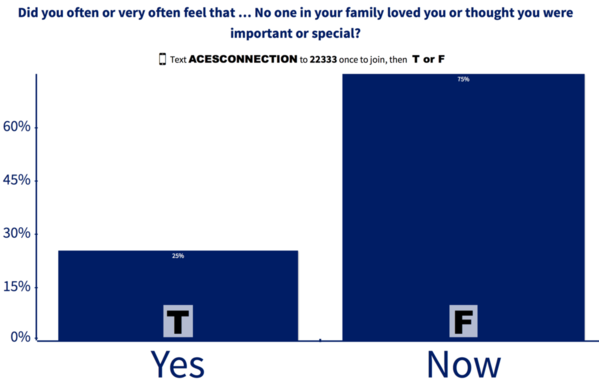
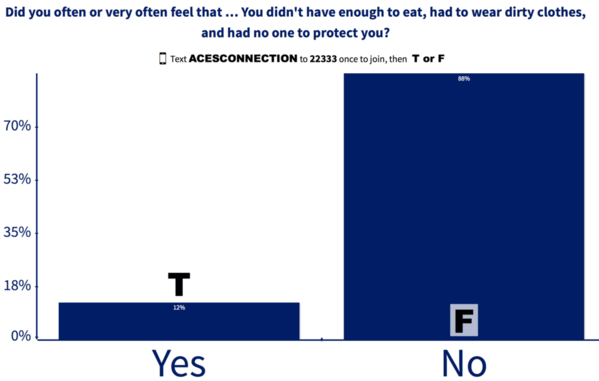
Comments (0)